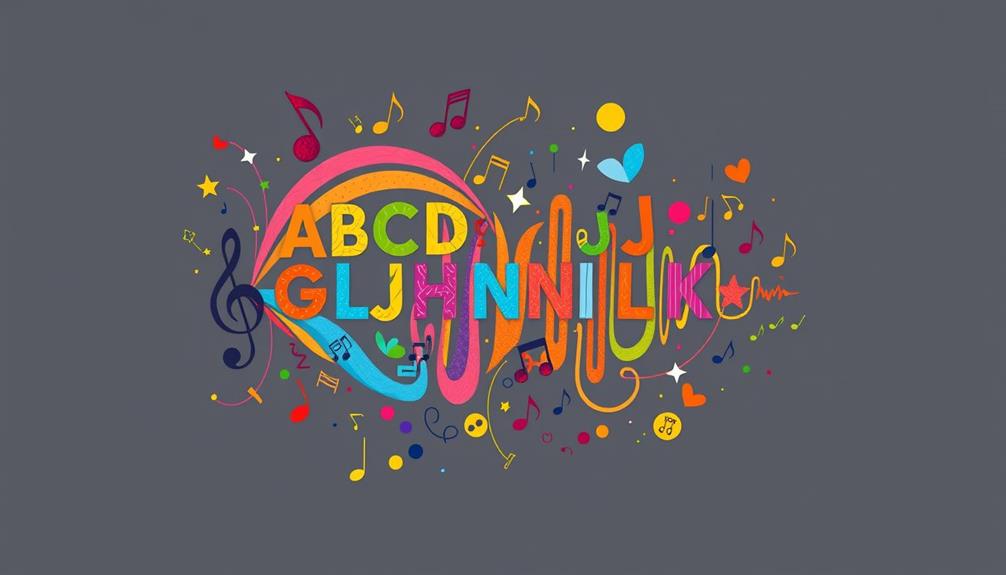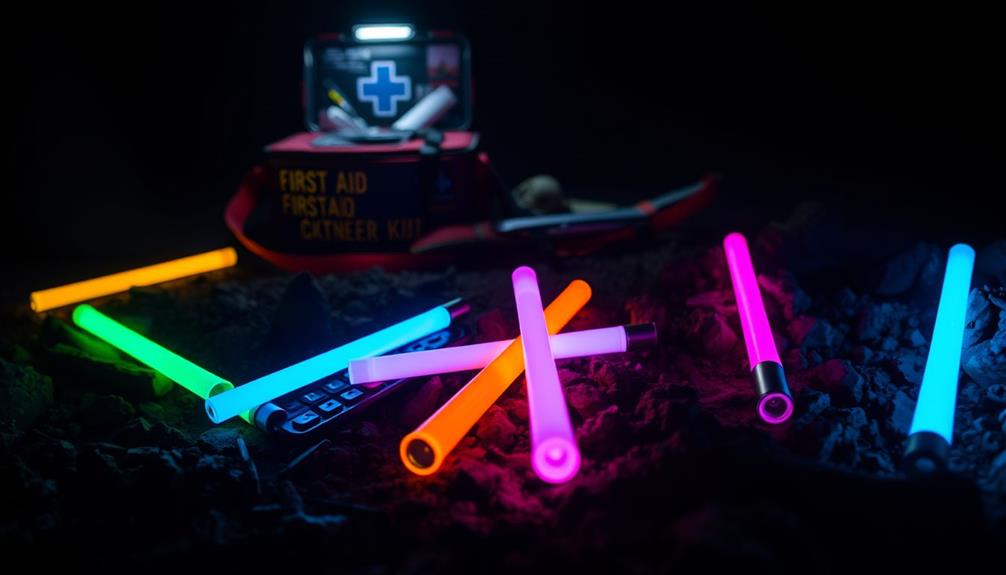Revealing the secrets of the phonetic alphabet can transform your communication skills, especially in high-pressure situations. Originally developed during World War II, it standardizes speech, reducing misunderstandings in noise-prone environments. By mastering the unique pronunciations for numbers and common slang terms, you'll enhance your confidence and effectiveness. Using effective training techniques, like daily drills and flashcards, makes this process easier. The benefits extend to military operations, aviation, and emergency services, ensuring clarity when it matters most. Stick around, and you'll discover even more tips and resources to help you master this essential skill.
Key Takeaways
- The phonetic alphabet, developed during WWII, ensures clear communication in noisy environments, reducing misunderstandings in critical situations.
- Familiarity with common slang terms like "Oscar Mike" and "Bravo Sierra" enhances operational efficiency and team connection.
- Unique pronunciations for numbers, such as "Wun" for 1 and "Niner" for 9, improve clarity in military contexts.
- Daily drills, flashcards, and mock conversations are effective training techniques to master phonetic communication.
- Practical applications in aviation, emergency services, and telecommunications highlight the importance of precise communication in high-stakes scenarios.
History of the Phonetic Alphabet

While you might think the phonetic alphabet is a modern invention, its roots trace back to World War II when the U.S. developed the "Able Baker" system for clearer communication.
This initiative aimed to reduce confusion during radio transmissions, especially under stressful conditions. As the war progressed, the British forces collaborated with the U.S., leading to the standardization of the phonetic alphabet that's recognized today as the NATO phonetic alphabet.
Each letter corresponds to a specific word, ensuring that even in noisy environments, messages remain clear. This system has since gained global adoption by military, aviation, and emergency services, demonstrating its effectiveness in standardizing communication and minimizing misunderstandings across various languages and settings.
Key Benefits of Using Phonetics

The standardized phonetic alphabet brings several key benefits that enhance communication effectiveness in various fields.
First, it notably reduces misunderstandings, especially in noisy environments like military or aviation settings. By using distinct words for each letter, you guarantee clarity when spelling out important information.
Second, it boosts confidence in high-pressure situations, allowing you to convey vital messages without hesitation.
Third, familiarity with the phonetic alphabet helps you collaborate more effectively with team members, as it standardizes communication across different languages and backgrounds.
Finally, mastering phonetics can improve your overall communication skills, making you a more effective communicator in any situation.
Embracing these benefits can truly transform how you interact in critical environments.
Understanding Common Slang Terms

Understanding common slang terms used in the military phonetic alphabet can greatly enhance your communication skills.
These phrases, like "Oscar Mike" for "On the Move," or "Charlie Foxtrot," which means "Cluster F&*$," streamline conversations, especially in chaotic environments. When you use these terms, you promote quick and clear exchanges among team members, fostering better teamwork.
For instance, saying "Bravo Sierra" can lighten the mood while expressing skepticism. Familiarizing yourself with such slang enhances operational efficiency, allowing you to convey messages more effectively.
As you grasp these terms, you'll not only improve your communication but also connect better with fellow personnel. Embrace this slang, and you'll find yourself maneuvering military lingo with confidence and ease.
Number Pronunciation Essentials

Mastering number pronunciation is fundamental for effective communication in military contexts. When you use the NATO phonetic alphabet, each number has a unique pronunciation to prevent confusion.
For example, you say "Wun" for 1, "Too" for 2, and "Tree" for 3. This clarity is imperative, especially in high-pressure situations where every second counts. Saying "Fower" for 4 and "Fife" for 5 guarantees your message is understood without error.
Keep in mind that "Siks" for 6, "Seven" for 7, "Ate" for 8, and "Niner" for 9 also play essential roles in clear communication. Practicing these pronunciations will enhance your confidence and effectiveness in relaying critical information during operations.
Training Techniques for Mastery

Effective training techniques can considerably enhance your mastery of the phonetic alphabet. Start by practicing daily drills, focusing on pronunciation and word association.
Use flashcards to reinforce your memory, ensuring you can recall each letter quickly. Pair up with a study buddy to conduct mock conversations, incorporating the phonetic alphabet to build confidence.
Record yourself speaking the alphabet and listen for clarity, making adjustments as needed. Consistency is key; set aside time each week for focused practice.
Incorporate real-world scenarios, like spelling out names or codes over the phone, to simulate high-pressure conditions. Incorporating real-world scenarios, such as spelling out names or codes over the phone, can help simulate high-pressure conditions and improve communication skills. For example, in a medical emergency, healthcare professionals may need to spell out a patient’s name or a medication code accurately and efficiently. This kind of training can help individuals remain calm and focused, even in stressful situations.
When it comes to sunflower seeds benefits, they are a great source of vitamin E, magnesium, and selenium, which are essential for overall health and well-being. Incorporating sunflower seeds into your diet can also help reduce inflammation and lower the risk of heart disease. So, not only do effective communication skills come in handy during high-pressure situations, but a healthy diet can also help in maintaining mental sharpness and focus.
Resources for Learning Phonetics

A variety of resources can greatly enhance your learning of the phonetic alphabet. You can find flashcards, mobile apps, and printable charts that make memorization easier. Here's a quick overview of helpful resources:
| Resource Type | Description |
|---|---|
| Flashcards | Visual aids for quick reference |
| Mobile Apps | Interactive learning on-the-go |
| Printable Charts | Easy access for study and practice |
Using these tools regularly will reinforce your understanding and pronunciation. Combine them with practice sessions to build confidence. The more you engage with these resources, the more proficient you'll become in using the phonetic alphabet, ensuring clear communication in any scenario.
Real-World Applications and Examples

The military phonetic alphabet serves essential roles in various real-world situations, from emergency response to aviation communication.
You'll find it enhances clarity, especially when every second counts. Here are some key applications:
- Aviation: Pilots and air traffic controllers use it to guarantee accurate communication, preventing dangerous misunderstandings.
- Emergency Services: First responders rely on it to convey crucial information clearly, minimizing confusion during crises.
- Military Operations: Troops use the phonetic alphabet for precise orders and coordination in high-pressure environments.
- Telecommunications: Call centers and customer service representatives use it to confirm details and avoid errors in customer information.
Frequently Asked Questions
How Did the Phonetic Alphabet Evolve Over Time?
The phonetic alphabet evolved from the U.S. military's "Able Baker" during World War II, becoming standardized through collaboration with British forces. You'll find it essential for clear communication in today's diverse, high-pressure environments.
Are There Variations of the Phonetic Alphabet in Different Countries?
You'll find variations of the phonetic alphabet around the globe, each with its own flair. From the military to aviation, these adaptations keep communication crisp and clear, ensuring no one's left guessing!
Can Civilians Benefit From Using the Phonetic Alphabet?
Yes, you can benefit from using the phonetic alphabet. It enhances clarity in everyday communication, especially over phone calls or in noisy environments, minimizing misunderstandings and ensuring accurate exchanges of important information.
What Are Common Mistakes When Using the Phonetic Alphabet?
You might confuse similar-sounding letters, like "M" and "N," or skip words altogether. Mispronouncing numbers can also lead to misunderstandings. Practice consistently to avoid these common mistakes and guarantee clear communication.
How Does the Phonetic Alphabet Improve Communication in Emergencies?
Imagine a frantic call for help during a storm. The phonetic alphabet guarantees you clearly convey essential details, like your location. It cuts through chaos, minimizing confusion and saving lives when every second counts.
Conclusion
By mastering the phonetic alphabet, you're not just learning a series of words; you're revealing a powerful key to clearer communication. Like a lighthouse guiding ships through fog, this tool illuminates your conversations in high-pressure situations, ensuring you and your team stay on the same page. Whether in the military or emergency services, the ability to spell out complex terms effortlessly can make all the difference. So, gear up and embrace this essential skill—you're ready to conquer any challenge!










